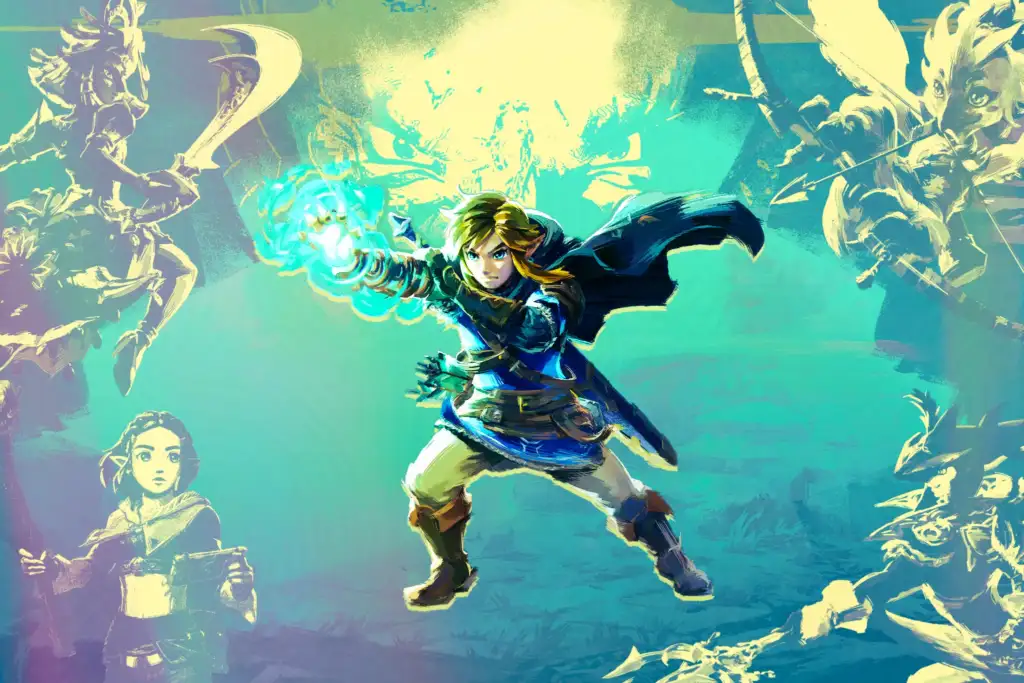
Despite its strange mascots and mysterious gameplay combinations, Nintendo has had a firm grip over the majority of its games.
In contrast to the series’ customary regimented gameplay, Link could roam practically anyplace in The Legend of Zelda: Breath of the Wild (2017). Nintendo gave gamers more leeway to experiment with the surroundings and physics. The game felt less constrained, offering players a sense of genuine exploration, even if Nintendo maintained control.
Breath of the Wild was an engineering marvel, a design revolution, and a positive indication that Nintendo was starting to let go. As it happens, it was only an overture.
Nintendo has further faded into obscurity in The Legend of Zelda: Tears of the Kingdom. Producer Eiji Aonuma, director Hidemaro Fujibayashi, and their team have created a multi-layered environment where exploration, battle, and traversal all depend heavily on self-driven experimentation. Tears of the Kingdom delves even further than Breath of the Wild, allowing us to interact on a much deeper level—after almost 70 hours, I feel as though I can control its very molecules—by having us do things like scale cliff sides, light brush outside enemy camps, and retrieve arrows embedded in our shield, to mention a few examples.
Tears of the Kingdom, one of the rare Zelda games with a direct sequel, begins shortly after Breath of the Wild. After removing Calamity Ganon from Hyrule Castle, Link and Princess Zelda are looking into the origin of an ethereal red liquid that has been rising from beneath the castle and subsequently dubbed “gloom.” After one mishap after another, they unintentionally release the demon lord Ganondorf’s paralysed form from his grave, unleashing yet another cataclysm. Bits of Hyrule rise into the sky, as large pieces of rubble shower down across the landscape. Once more, Link wakes up barely clothed in his panties.
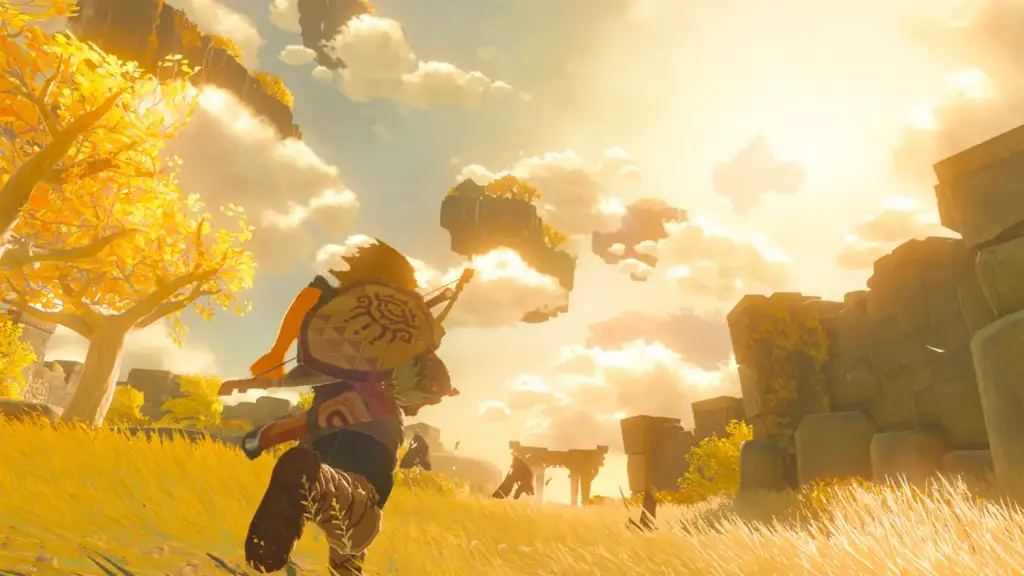
From there, you started looking for Zelda (who vanished after the Upheaval, as those who survived this world-changing disaster refer to it), assembling the legendary Sages who may perhaps fight Ganondorf, and assisting the people living in the enormous world known as Tears of the Kingdom.
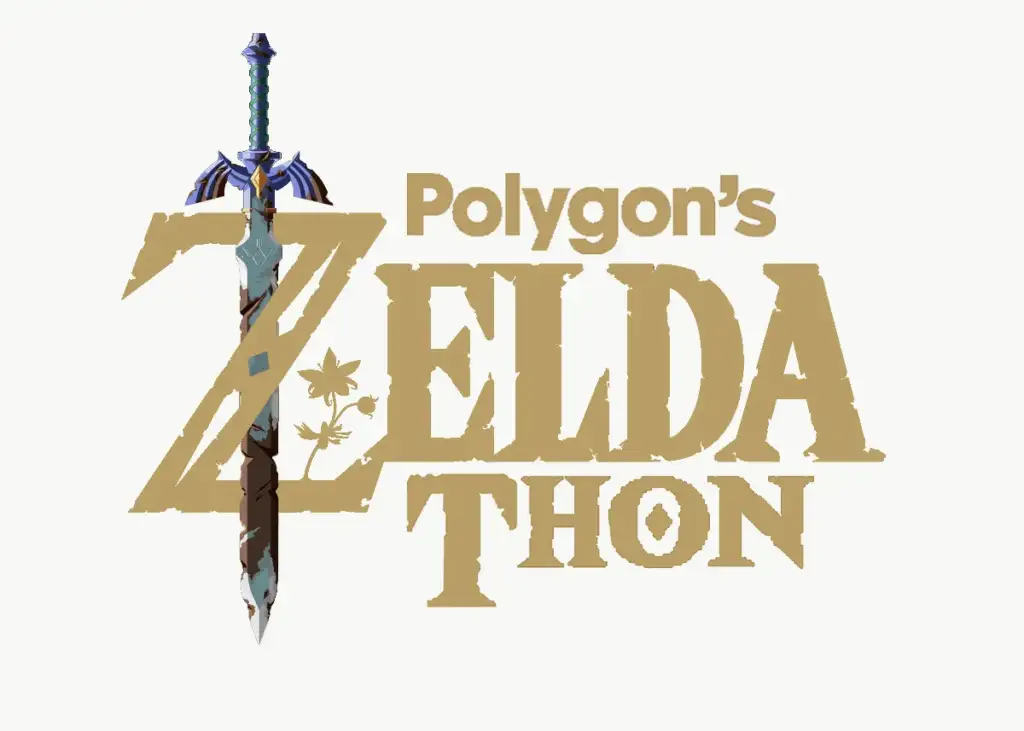
Polygon is starting a Zeldathon in 2023. Come along for the ride as we explore The Legend of Zelda: Tears of the Kingdom and other games in the franchise, starting with the 1986 original game.
The basics of Link’s new powers are taught to you in a confined setting, in this instance a sky archipelago inhabited by the surviving robot assistants of an extinct civilisation known as the Zonai, in typical Breath of the Wild fashion. These people who live in the sky use technology that most Hyruleans, including Link and Zelda, would consider magical. But to us, as players, they’re essentially cheat codes that Nintendo gives you ten minutes into the game.
With the use of one of those talents, Ascend, Link may swim upward through solid geometries such as rock, concrete, and soil before emerging through the earth. In essence, he has no clips. I once used Ascend on the ceiling to search a cave for a desired piece of armour. Four seconds later, I was standing atop a mountain. This, as you may imagine, became my go-to method for climbing mountains.
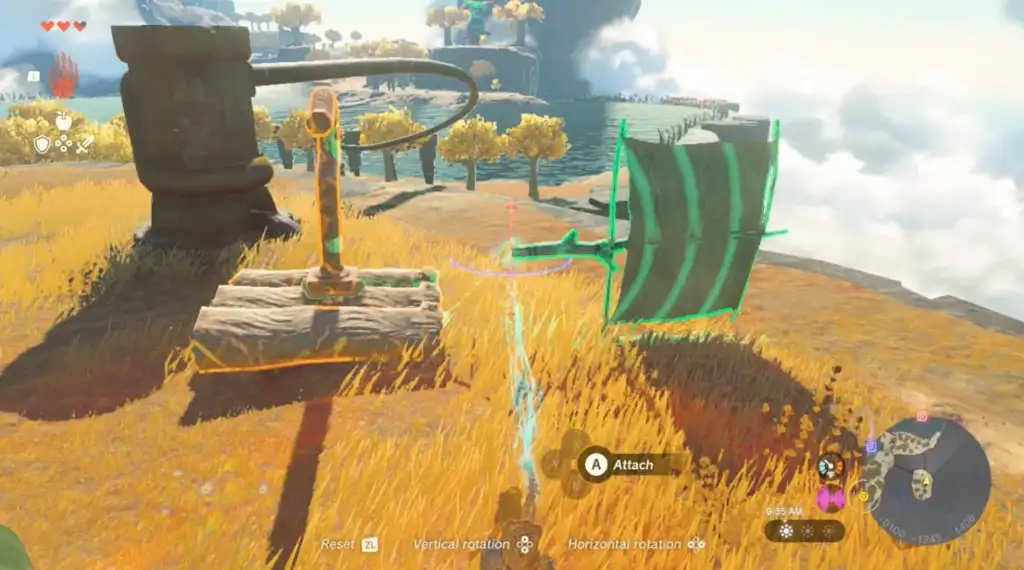
You can reverse a projectile along its flight path with another skill called Recall until it comes to a stop at its original launch site. When it comes to explosives or elemental vessels, Recalled items explode right in front of the enemy that originally sent them your way. There are even more use for this skill outside of combat: I dropped a platform from a ledge above me, stepped upon it, then cast Recall close to my feet to create multiple makeshift elevators.
Then there’s Fuse, which lets you attach any disposable item to your stick, sword, spear, shield, or arrows from your inventory. You’re forced to improvise your armament from Zonai blades, elemental stones, rocks, or monster pieces because the aforementioned gloom has corroded practically every weapon in Hyrule (Nintendo explains this phenomenon later). Making a whip similar to the one in Castlevania with Lizalfos tail and a sword hilt was one of my favourite combos. I also acknowledge that I frequently fused bomb flowers to my arrowheads because I couldn’t resist the allure of the ensuing explosions.
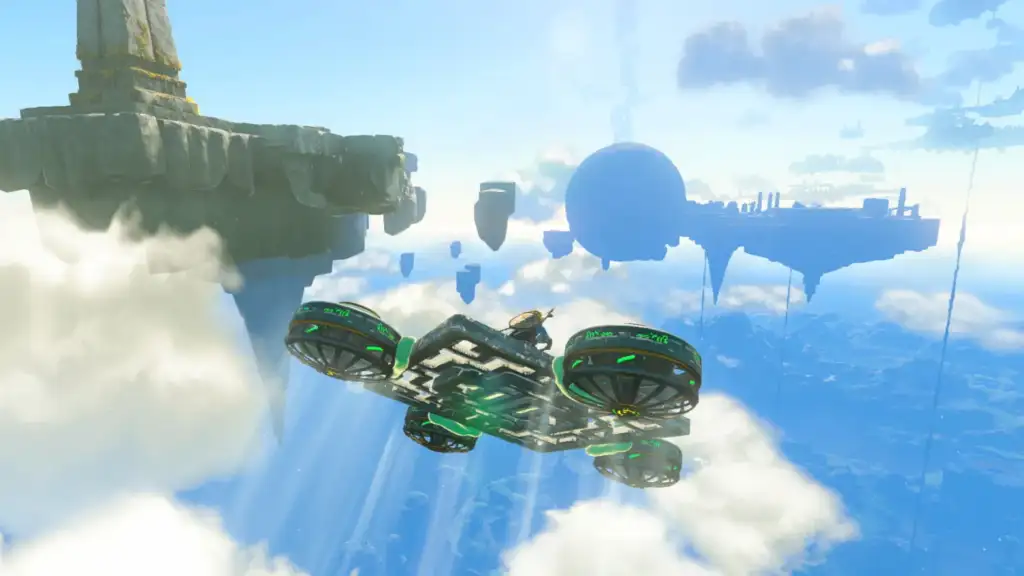
And lastly, Ultrahand. If every Zelda game has a central mechanical idea, like Wind Waker’s sailing, Majora’s Mask’s time loop, or Oracle of Seasons’ weather manipulation, then Tears of the Kingdom’s main selling point is definitely this feature, over which Nintendo has given the player the greatest degree of control. You may build waggons, defensive constructions, scaffolding, elevators, catapults, bridges, ramps, hot air balloons, flame turrets, fighter planes or gondolas by connecting a long list of various Zonai objects and natural things. I once built a fan-powered desert skiff to travel across the Gerudo Desert instead of renting a Sand Seal. Not long after, I spotted a Molduga, whose massive, ravenous body slithered under the sand towards me.
I won’t bore you with details of all the ways I employed these powers or the innumerable homemade weapons I made during my game; however, I highly suggest fusing Hylian mushrooms with a wooden stick. Otherwise, it would read like a crazy scientist’s dream journal. My head is still swimming with potential tricks, schemes, and mixtures that I haven’t explored after 70 hours of gameplay. During writing this review, I have run to my Switch no less than four times, like a brilliant lightbulb over my head, to test my suspicion that I could be able to accomplish Z by completing Y after setting up X. Every time, my theories a la Doc Brown turned out to be accurate.
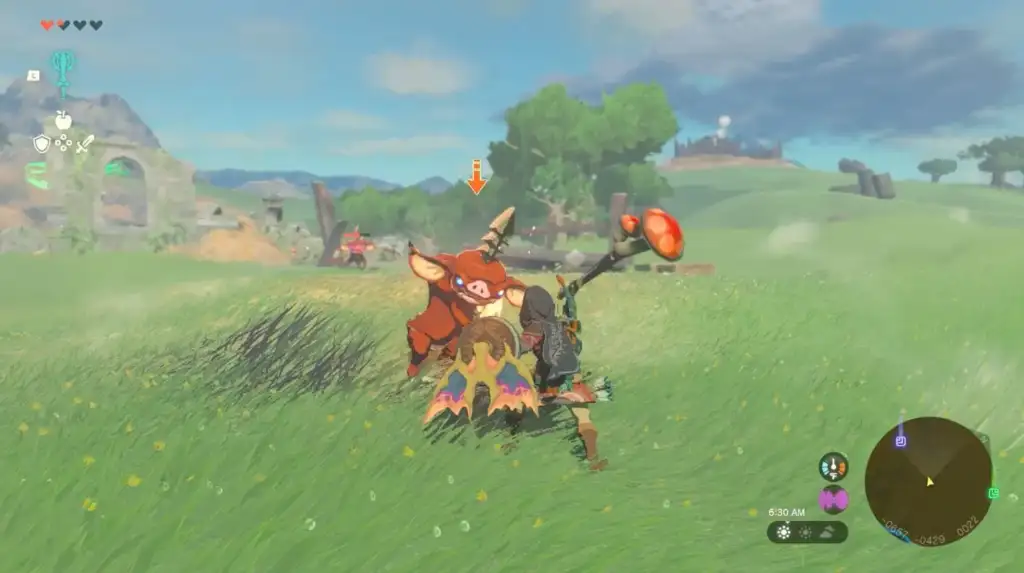
The object of the game is to try out each of these abilities and see how they work together. There are instances when making weapons is purely necessary. In other cases, you build a vehicle to ease the burden of traversal. And during the best parts of Tears of the Kingdom, you take advantage of these abilities to create mayhem for the sake of chaos. This new Link is a hybrid of MacGyver, Imperator Furiosa, and Aragorn.
This degree of independence was a little intimidating at first. I’ve spent my entire life playing “immersive sims,” and I appreciate it when developers provide me a variety of options for solving issues. However, I have never seen an agency of this calibre and calibre of polish on such a large scale. Everything in this vast globe serves as a teaching for something else. I spent several hours learning how to use some Zonai artefacts, but if you find the correct shrine, you could pick up the skills quickly. After spending hours playing through the game, I had to let go of the notion that there was a “correct” strategy and just enjoy its silliness and thrills.
At first, this level of independence was a little frightening. I have always played “immersive sims,” thus I really like it when devs give me other ways to solve problems. But, I’ve never come across an organisation with this calibre and level of polish on such a grand scale. Everything on this enormous planet teaches us something else. Learning how to use various Zonai artefacts took me several hours, but if you find the right shrine, you could become proficient quickly. I had to give up on the idea that there was a “correct” technique after spending hours playing the game and just appreciate its absurdity and excitement.
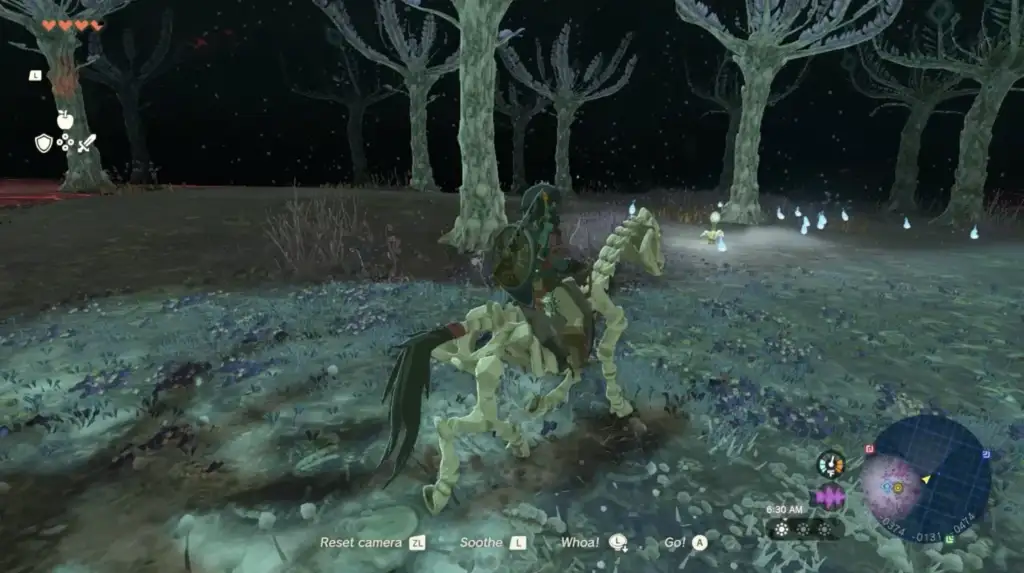
Although not entirely original, this structure is impressive in and of itself. Link can skydive down to Hyrule from the floating islands in The Legend of Zelda: Skyward Sword (2011). Similar to this, developer FromSoftware withholds the existence of Elden Ring’s underground region until halfway through the game in 2022.
However, the Hyrule in Skyward Sword is merely a scattering of isolated areas where Link explores a dungeon before taking flight again. The subterranean portion of Elden Ring is a similarly disjointed area of zones, similarly linked to the surface by waygates, lifts and wells.
It is one thing to arrange these strata; it is another to weave their connective network. The sheer joy and ease with which you may navigate between Tears of the Kingdom’s three layers is what sets it apart. It’s more than just a game where you have to climb a mountain and then ride a strong breeze down the other side. It’s one where you jump from a floating piece of tundra, plunge five thousand feet down into a lake, climb out of the water, cross a lush field, ascend to another enormous gap and then skydive into the ground.

Nintendo promotes three-layer exploration in Tears of the Kingdom by employing tools and resources. The Depths are illuminated by brightbloom seeds, which are restricted to surface caves. Sky Islands treasure maps go to places deep within the Depths. This starts a circle of reward, creation, and discovery. Like reoccurring melodies in a symphony, the geographical connections between the realms are best experienced organically.
If Tears of the Kingdom may be viewed as a conversation between the creator and the viewer, as is the case with music, movies, TV shows, and novels, then Nintendo has successfully altered the discourse. Historically, Nintendo would typically respond with “no” or “not yet” when Zelda players enquired, “Can I do this?” Tears of the Kingdom goes one step further than Breath of the Wild, which frequently responded in the affirmative: Nintendo doesn’t merely strive to answer “yes” when asked if something is feasible in this vast, ludicrous, and enigmatic world. It is difficult to say “yes, but also.”
There are several instances where the artificiality is made clear. It should come as no surprise that the Switch is becoming older. In both portable and docked modes, Tears of the Kingdom performs no better than Breath of the Wild; the frame rate can still be appalling, particularly in places with busy water effects or dense woodlands. There is a wide range of loading times, from two seconds to ten.

Nintendo promotes using materials and resources to navigate across the three game layers in Tears of the Kingdom. For example, brightbloom seeds are limited to surface caves but light the Depths. Sky Islands treasure maps lead to the Depths. It’s a cycle of learning, producing, and reaping rewards. Like themes in a symphony, the greatest way to discover geographical connections between the realms is by chance.
It’s in these moments that I am gently reminded that there is no such thing as actual player freedom. I live in the world that Nintendo created. Even while its designers may not have intended for me to use the resources they offered, I will be using them in the coming weeks, months, or years. Tears of the Kingdom is brilliant because it effectively conveys the idea of player autonomy. Yes, every now and again Nintendo jolts me out of my reverie and I catch glimpses of its previous, inflexible nature. Whatever the case, I will eventually be able to completely evade its wary stare.
On May 12, the Nintendo Switch version of The Legend of Zelda: Tears of the Kingdom will launch. Nintendo offered a pre-release download code for the game, which was used for the review. Vox Media has relationships with affiliates. These don’t affect editorial content, but Vox Media might get paid for goods bought through affiliate links.
